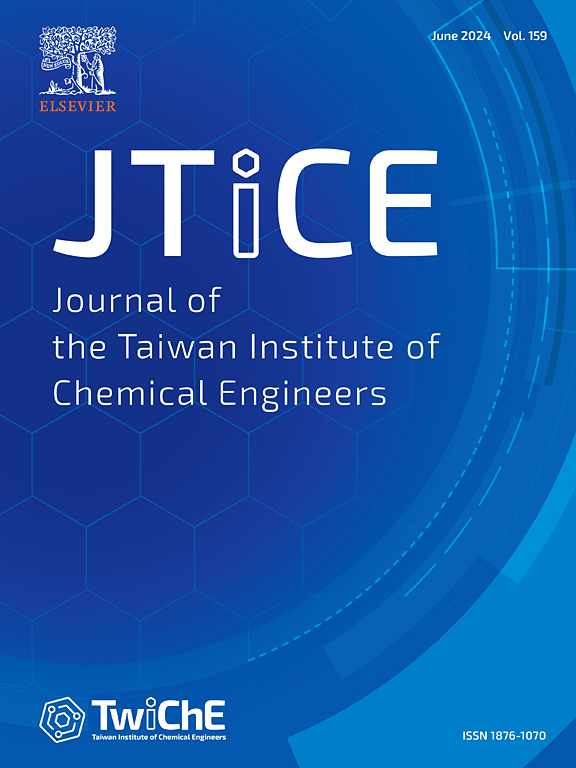Investigation of Al doped Rh@Cr2O3/SrTiO3 photocatalysts in overall seawater splitting with the synergetic electron mediators
IF 5.5
3区 工程技术
Q1 ENGINEERING, CHEMICAL
Journal of the Taiwan Institute of Chemical Engineers
Pub Date : 2025-01-16
DOI:10.1016/j.jtice.2025.105971
引用次数: 0
Abstract
Background
The solar-driven photocatalytic seawater splitting process for simultaneous hydrogen and oxygen gas has garnered significant attention as a promising technique for generating eco-friendly chemical fuels. This approach is particularly attractive because of its low cost, and the ability to utilize abundant sunlight and seawater resources.
Methods
The Rh@Cr2O3/SrTiO3:Al (RCSTOA) heterojunction photocatalyst, synthesized via flux technique and photodeposition treatment, possessed distinctive physicochemical properties and exhibited high photocatalytic seawater-splitting performance.
Significant findings
The findings emphasized that the thin layers of Rh@Cr2O3 structure (5–20 nm) firmly intimate with a SrTiO3:Al (STOA) photocatalyst significantly enhanced the seawater-splitting process without requiring any sacrificial agents. Hydrogen and oxygen evolution rates (HER and OER) in natural seawater splitting increased significantly, achieving 263 and 130 µmol.g−1.h−1, respectively maintaining photostability after five consecutive cycles under simulated sunlight illumination. Notably, under the synergy of I−-anion solution, the HER improved to 332 µmol.g−1.h−1 without any OER, highlighting potential for H₂/O₂ separation. These findings are expected to advance seawater splitting technology and contribute to potential H2/O2 separation techniques in this field.

求助全文
约1分钟内获得全文
求助全文
来源期刊
CiteScore
9.10
自引率
14.00%
发文量
362
审稿时长
35 days
期刊介绍:
Journal of the Taiwan Institute of Chemical Engineers (formerly known as Journal of the Chinese Institute of Chemical Engineers) publishes original works, from fundamental principles to practical applications, in the broad field of chemical engineering with special focus on three aspects: Chemical and Biomolecular Science and Technology, Energy and Environmental Science and Technology, and Materials Science and Technology. Authors should choose for their manuscript an appropriate aspect section and a few related classifications when submitting to the journal online.

 求助内容:
求助内容: 应助结果提醒方式:
应助结果提醒方式:


